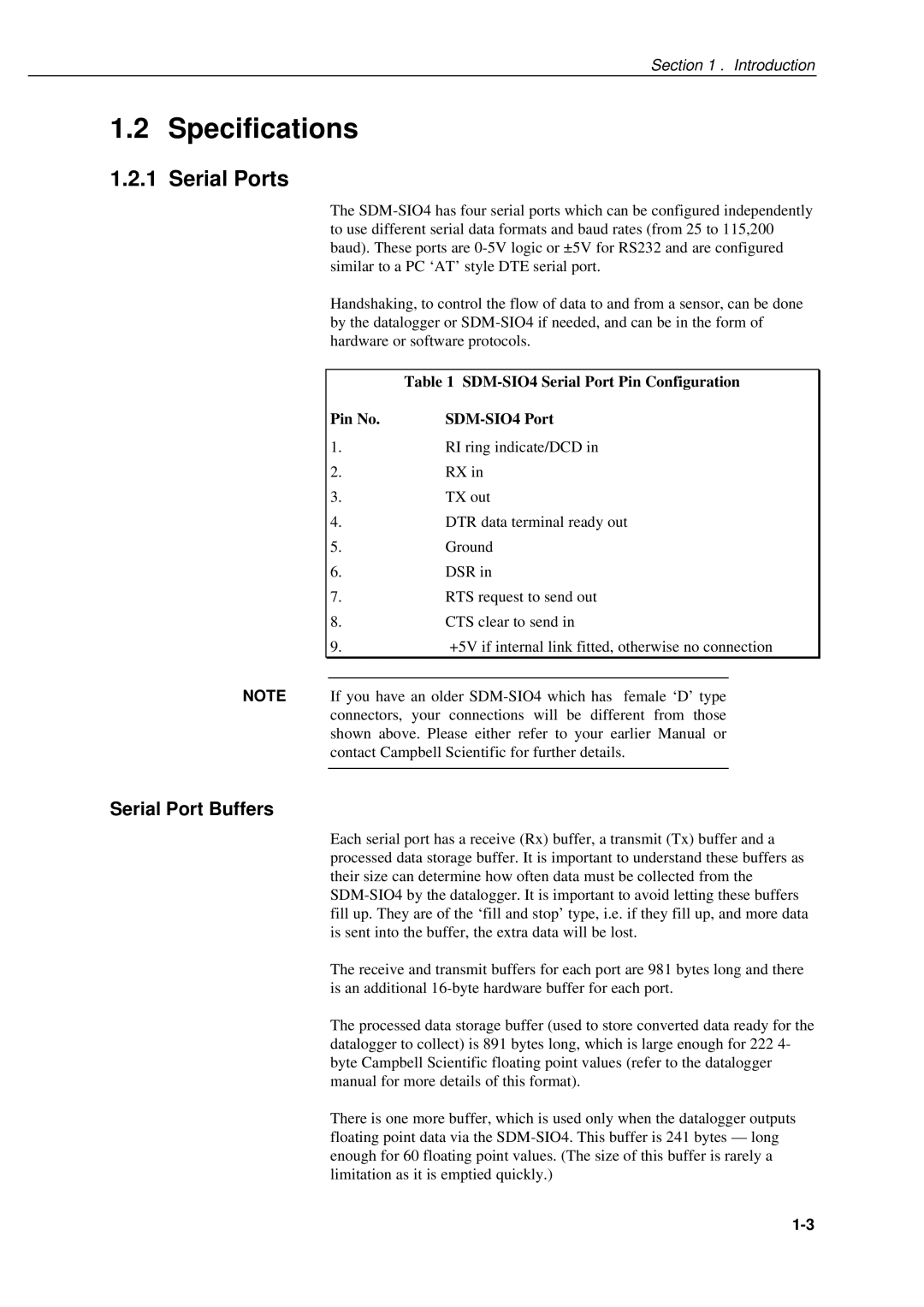
Section 1 . Introduction
1.2 Specifications
1.2.1 Serial Ports
The
Handshaking, to control the flow of data to and from a sensor, can be done by the datalogger or
| Table 1 | |
Pin No. |
| |
1. | RI ring indicate/DCD in | |
2. | RX in | |
3. | TX out | |
4. | DTR data terminal ready out | |
5. | Ground | |
6. | DSR in | |
7. | RTS request to send out | |
8. | CTS clear to send in | |
9. | +5V if internal link fitted, otherwise no connection | |
|
|
|
NOTE If you have an older
Serial Port Buffers
Each serial port has a receive (Rx) buffer, a transmit (Tx) buffer and a processed data storage buffer. It is important to understand these buffers as their size can determine how often data must be collected from the
The receive and transmit buffers for each port are 981 bytes long and there is an additional
The processed data storage buffer (used to store converted data ready for the datalogger to collect) is 891 bytes long, which is large enough for 222 4- byte Campbell Scientific floating point values (refer to the datalogger manual for more details of this format).
There is one more buffer, which is used only when the datalogger outputs floating point data via the
